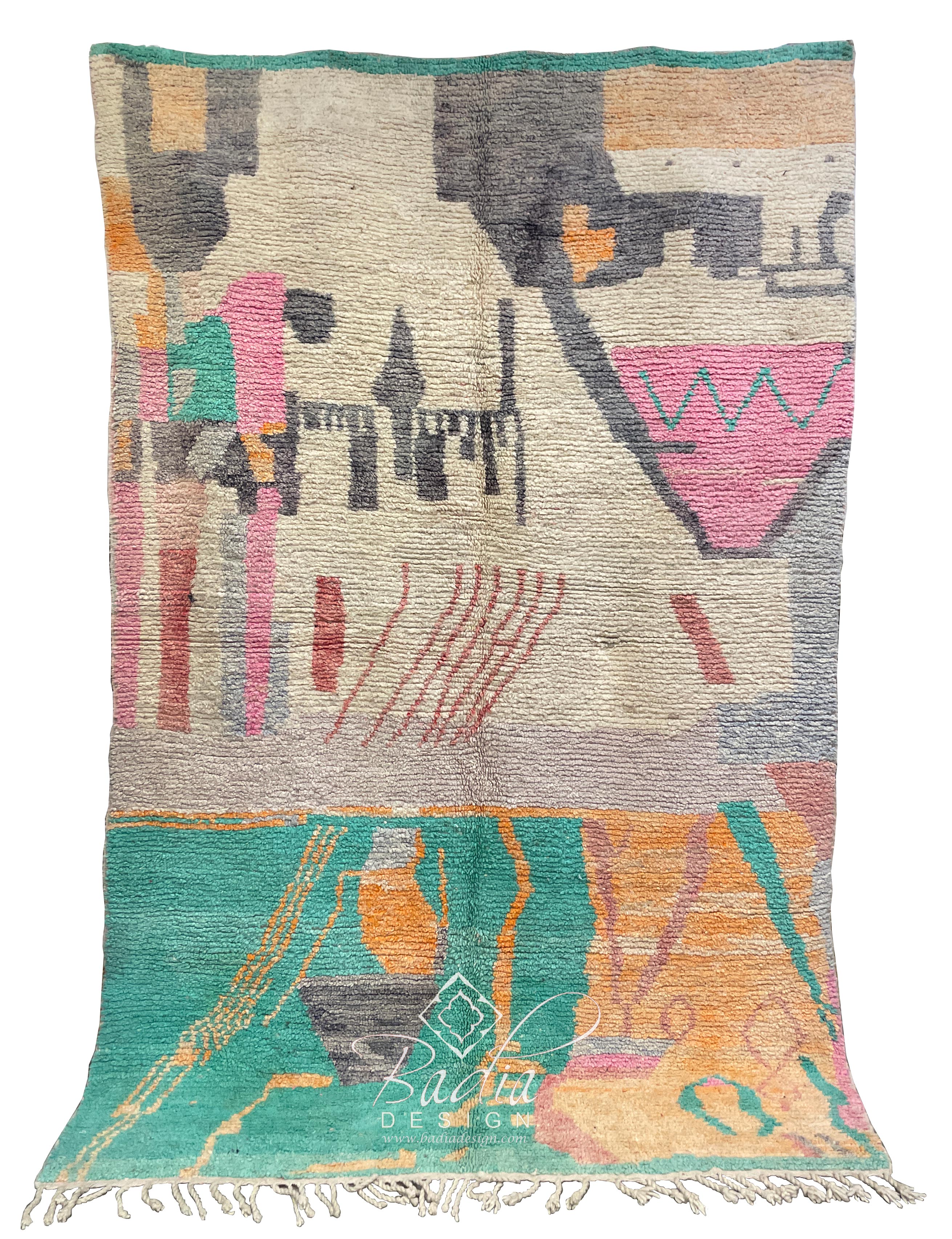Modern Berber Rugs
Modern Berber Rugs
Blog Article
Moroccan Berber Rugs: A Heritage of Craftsmanship, Culture, and Style
These rugs have enchanted people across the globe with their deep cultural roots, remarkable artistry, and versatile aesthetics. These rugs can enhance any space, from a snug living area to a sleek office environment. This guide delves into the fascinating history of Moroccan Berber rugs, the meticulous craftsmanship behind their creation, their exceptional longevity, and practical tips for styling them in modern spaces.
The origins of Moroccan Berber rugs can be traced back thousands of years to the indigenous communities of North Africa. These indigenous groups, with their deeply rooted traditions, developed rug-weaving techniques to meet the demands of their migratory way of life and diverse climates.
The symbols and motifs in these rugs narrate stories that are unique to the tribe or family of origin. These symbols frequently represent here themes of safety, growth, or nature, making each rug a highly meaningful creation. Historically, these rugs were made for practical use, offering warmth in the cold Atlas Mountains or serving as bedding in arid environments.
During the 20th century, these rugs were introduced to global design by architects such as Le Corbusier and Frank Lloyd Wright, who used them in renowned works. Today, their timeless aesthetic and cultural richness make them a top pick for decorators and art enthusiasts worldwide.
The production of Moroccan Berber rugs is an intricate process passed on through generations. It represents a harmonious fusion of cultural heritage and artistic skill.
Berber rugs are typically crafted from eco-friendly fibers such as pure wool, camel hair, or even cotton. Wool is especially prized for its luxurious feel, durability, and ability to retain warmth. The wool is usually spun by hand, resulting in a truly individual finish.
Berber rugs are handwoven on traditional looms, a process that can take extensive time depending on the size and complexity of the design. The knotting style, from Beni Ourain’s plush textures to Azilal’s tighter weaves, impacts both durability and design.
Natural dyes derived from organic sources are used to create the vibrant colors found in many Berber rugs. Earthy tones such as beige, cream, and brown are common in Beni Ourain rugs, while Azilal and Boucherouite rugs showcase bolder colors like reds, blues, and yellows.
One of the key features of Moroccan Berber rugs is their exceptional durability. As a result, they’re an excellent fit for living spaces and offices.
The use of premium materials ensures that Berber rugs retain their integrity over years of use. Wool’s natural flexibility and resistance to stains make it a ideal choice for lasting rugs.
Cleaning and maintaining a Moroccan Berber rug is relatively simple. Routine vacuuming and periodic professional care can preserve their beauty for decades.
How to Decorate with Moroccan Berber Rugs
Adding Moroccan Berber rugs to modern spaces is simpler than it seems. These rugs' adaptability allows them to suit various aesthetics, including minimalist and bohemian styles.
1. Create a Focal Point in the Living Room
Use a large Beni Ourain rug as the centerpiece of your living room. The rug’s muted tones and clean lines bring cohesion to the space and exude coziness.
2. Introduce Vibrancy to Minimalist Rooms
If your space leans toward a monochromatic or minimalist aesthetic, a vibrant Azilal or Boucherouite rug can introduce a pop of color and visual interest. They are ideal for subdued settings, acting as the central highlight.
3. Combine Rugs for Depth and Style
To create a warm, layered look, place a smaller Berber rug atop a larger rug made from natural fibers like jute or sisal. This pairing enhances texture and emphasizes the unique patterns of the Berber rug.
4. Elevate the Look of Offices and Workspaces
Moroccan Berber rugs are perfect for adding elegance and warmth to professional spaces, including offices and lounges. The artisanal craftsmanship of these rugs radiates authenticity and refinement.
5. Display Moroccan Berber Rugs as Decorative Art
Some Moroccan Berber rugs are so visually stunning that they deserve to be displayed as art. Displaying a Berber rug on a wall highlights its intricate design and cultural significance.
Why Moroccan Berber Rugs Are a Wise Investment
Moroccan Berber rugs combine functionality, beauty, and cultural depth, making them a valuable choice for homes and businesses alike. Their durability ensures a long lifespan, while their timeless designs can adapt to changing trends and tastes.
Sustainability and Ethical Production
Berber rugs are often made with environmentally responsible and sustainable techniques. By investing in these rugs, you’re not only enhancing your space but also supporting traditional artisans and their communities.
Increasing Value Over Time
Authentic Moroccan Berber rugs often appreciate in value over time, especially vintage or rare pieces. They are both functional decor and collectible assets.
 Report this page
Report this page